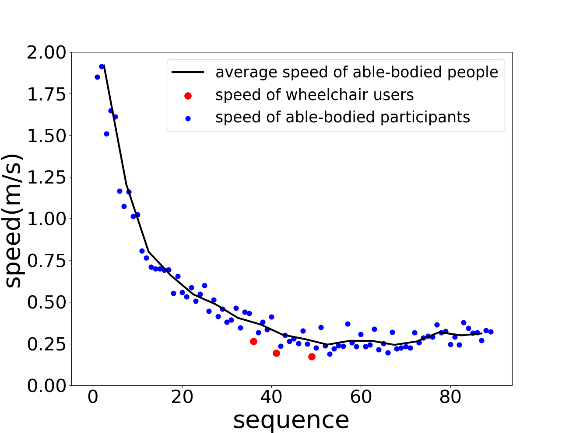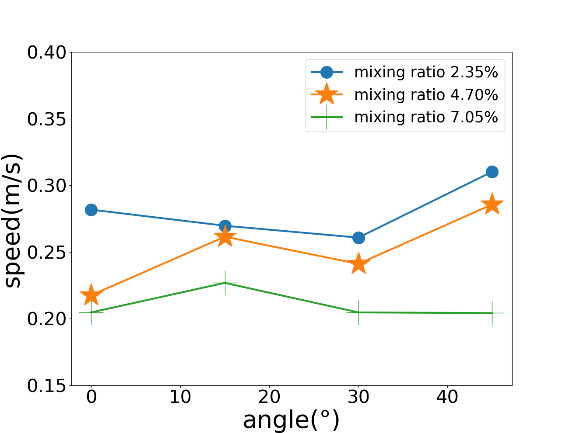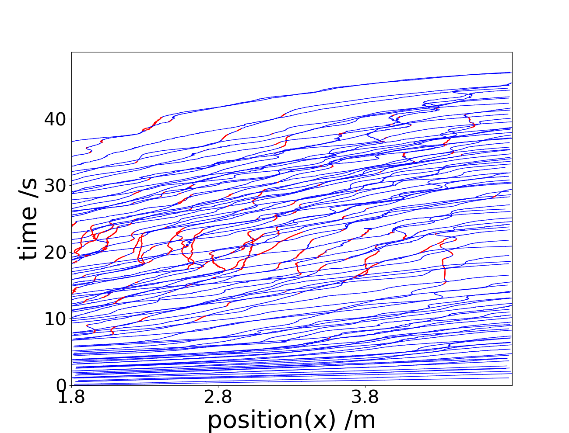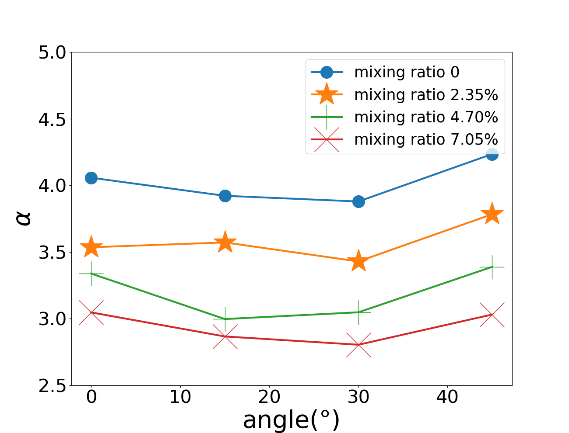Experimental study of pedestrian flow mixed with wheelchair users through funnel-shaped bottlenecks
Problem & Motivation
1. Nowadays, the number of people with mobility impaired has increased significantly in China. For the purpose of safety evacuation and barrier-free facilities design, it is of great significance to study the characteristics of pedestrian flows including wheelchair users.
2. The bottleneck area is the places where pedestrians gather easily and congestion occurs frequently. Some experiments on animals and able-bodied pedestrians have been performed to study the influence of angles on the traffic efficiency of pedestrian flow. However, the pedestrians including wheelchair users have been rarely addressed.
Methods
1. A series of controlled experiments has been conducted to explore the effect of the ratios of wheelchair users on pedestrian flows through funnel shaped bottlenecks with different angles. The speeds of wheelchair users get lower with the increase of the mixing ratio. The average speeds of wheelchair users in the bottleneck is the fastest in 45° bottleneck (0.310±0.097m/s) until the mixing ratio arrives at 7.05%.
2. The bottleneck of angle 45° reflects a better efficiency of movement and less degree of stopping and congestion (2.8%~9.9% according to the variation ratios of the factors including escape time, stopping time and time headway) in the pedestrian flows under the circumstance of low mixing ratio (<2.35%) compared to other three angles (0°, 15°, 30°). However, the advantages of the angle 45° disappear in the condition of high mixing ratio as the factors are close to that in angle 0°.




Related publication
Pan H, Zhang J, Song W. Experimental study of pedestrian flow mixed with wheelchair users through funnel-shaped bottlenecks[J]. Journal of Statistical Mechanics: Theory and Experiment, 2020, 2020(3): 033401.
Download: [Paper]

